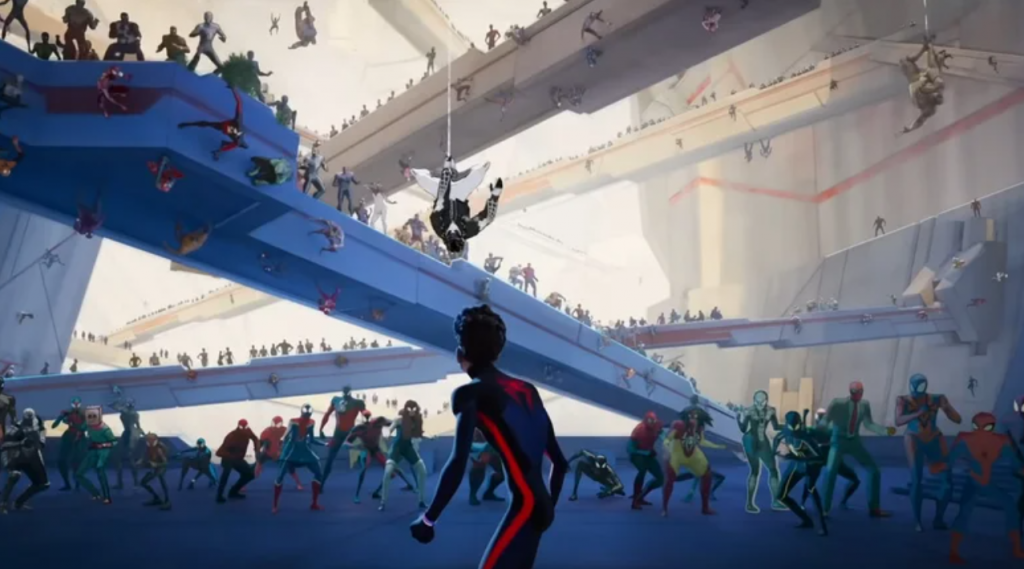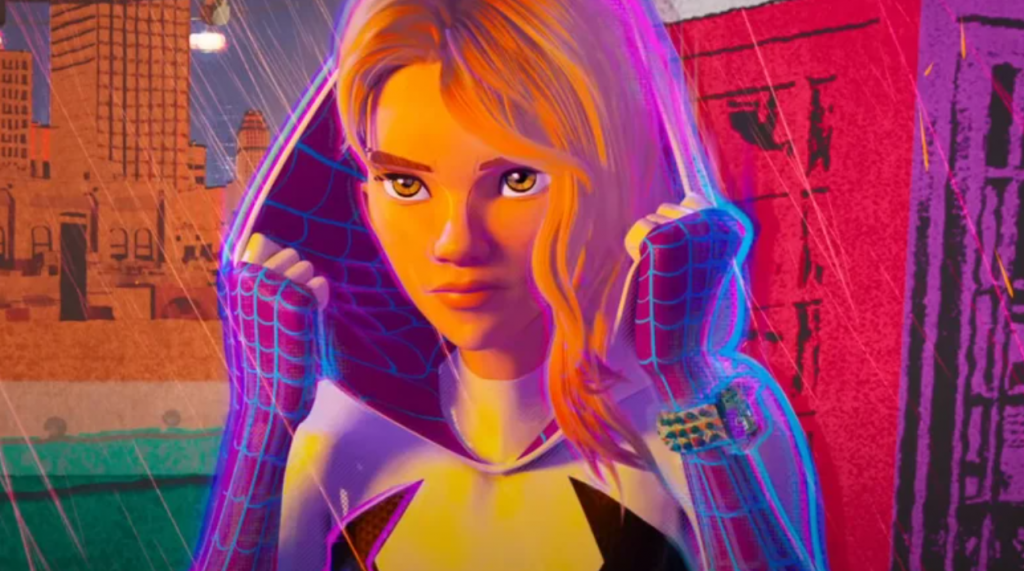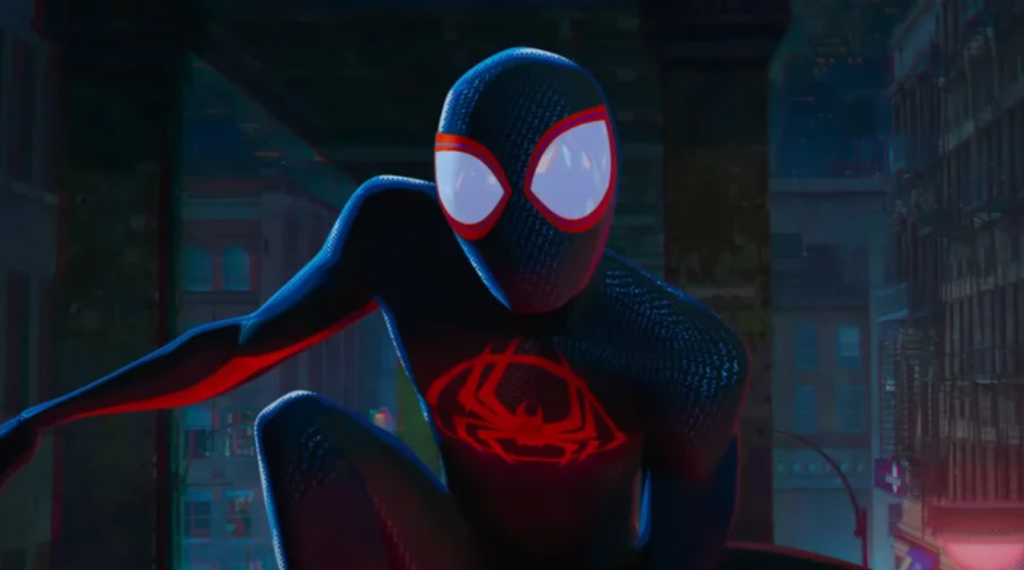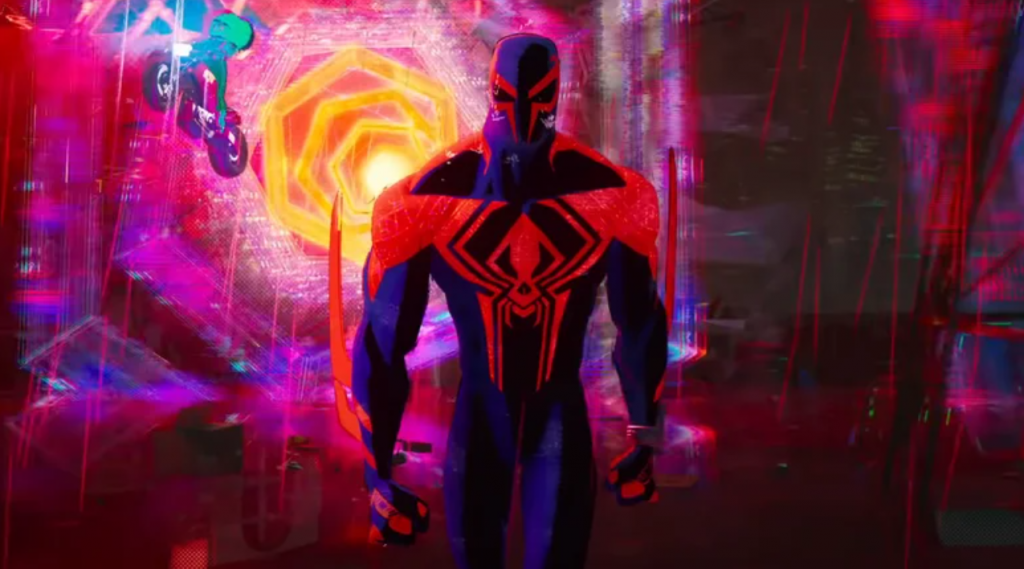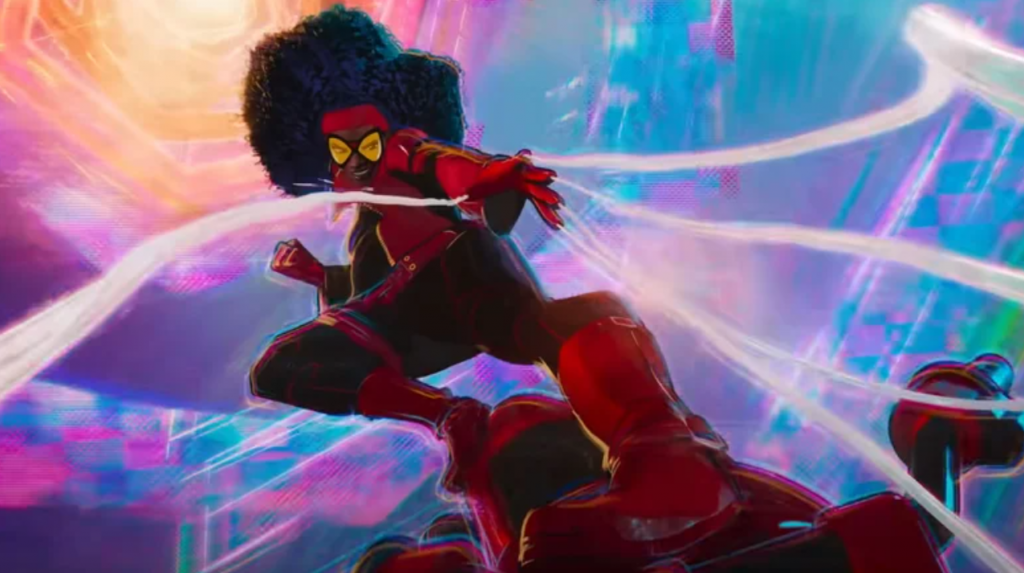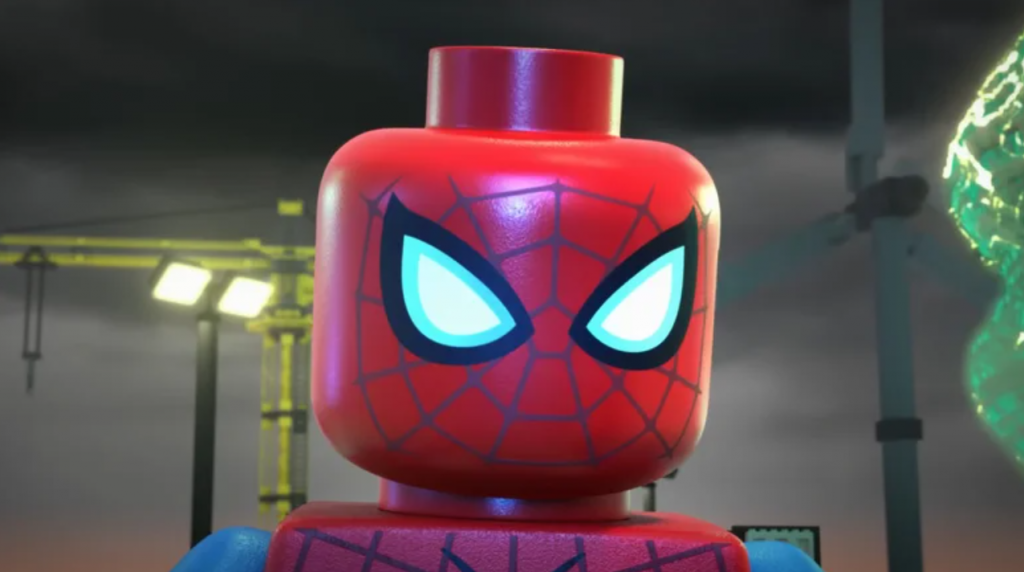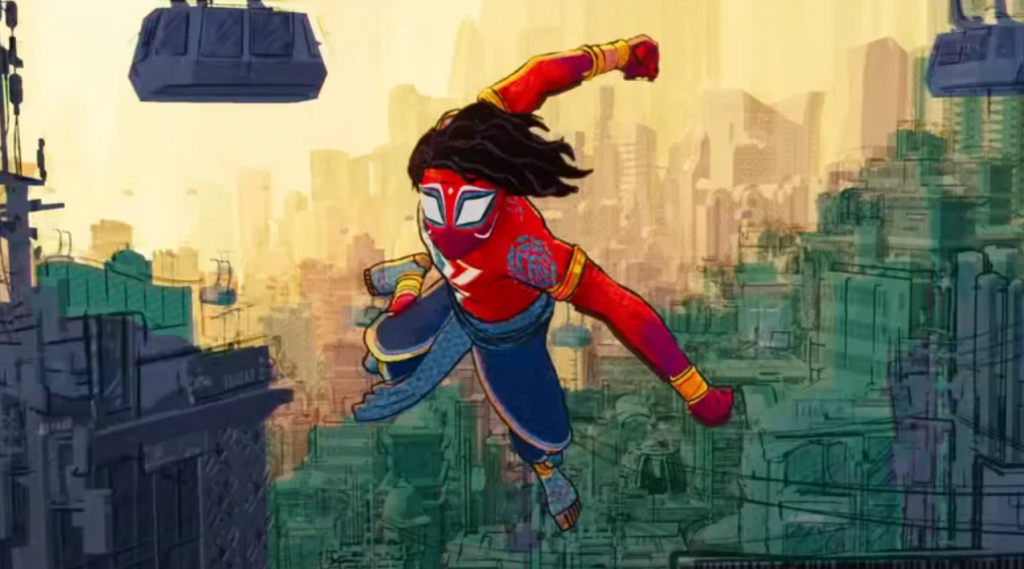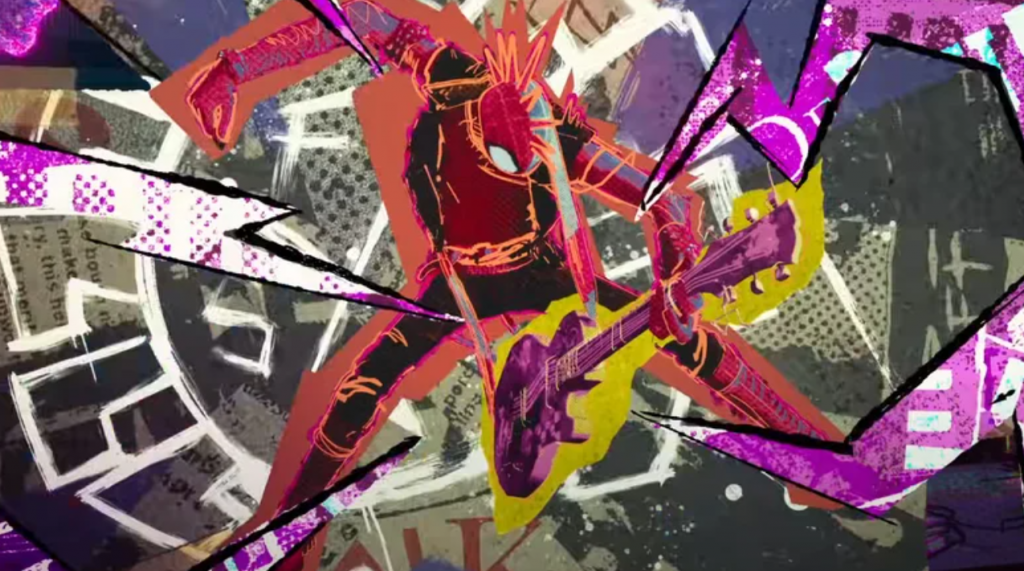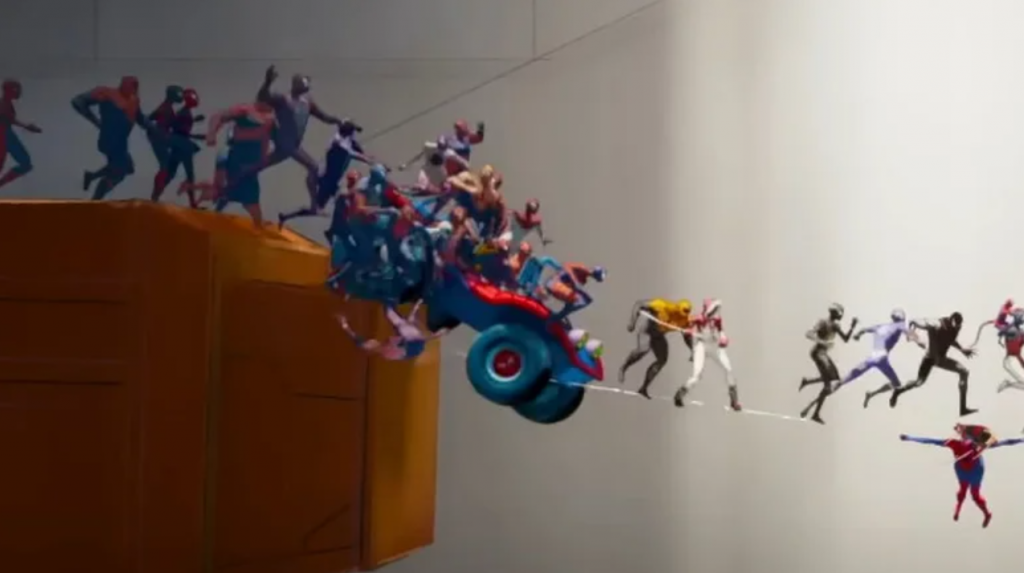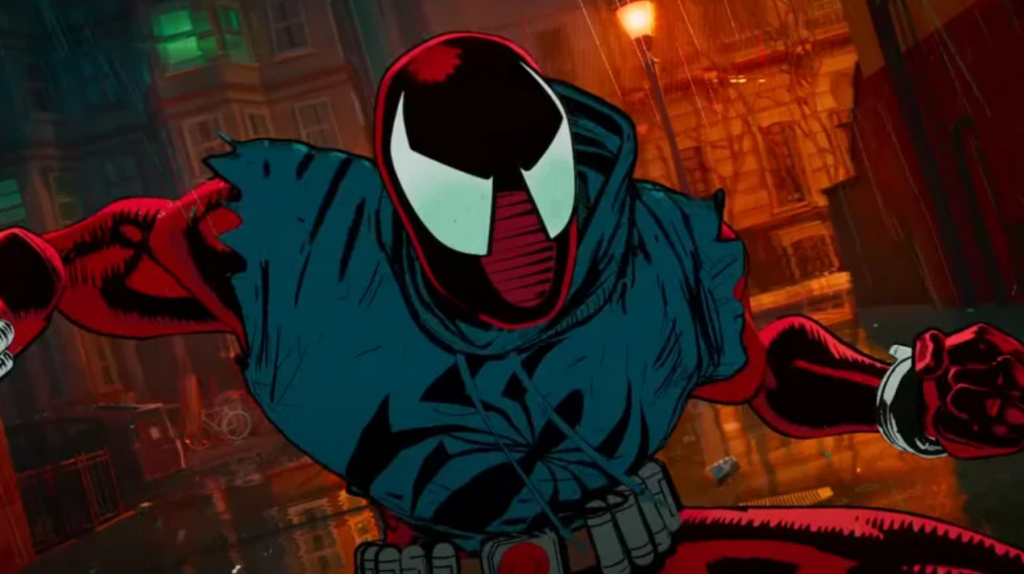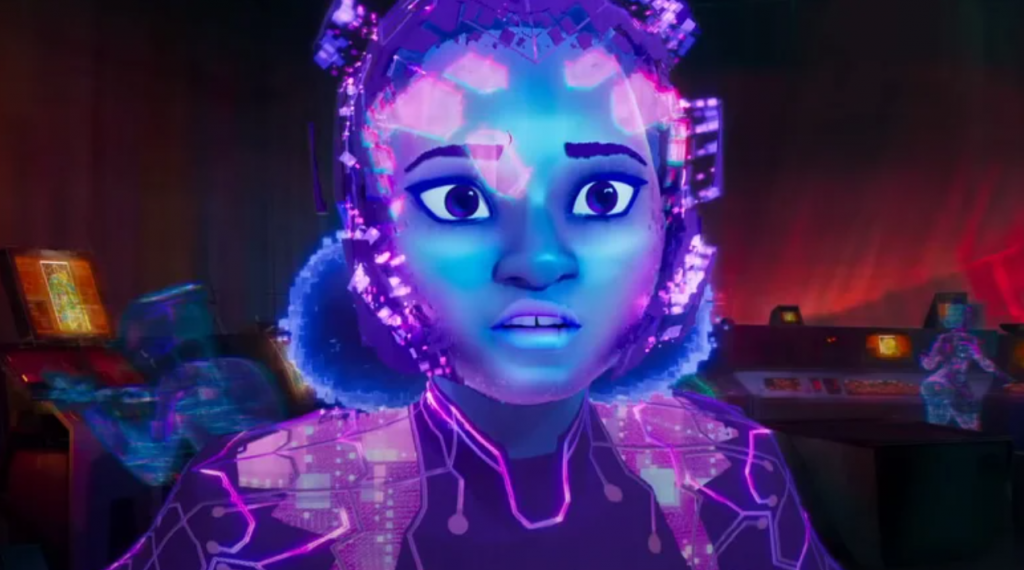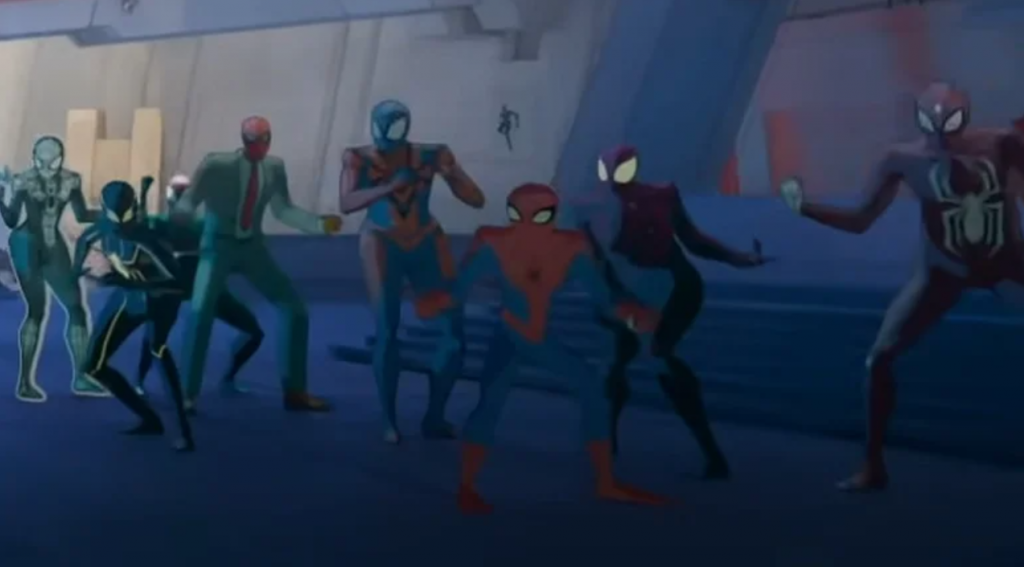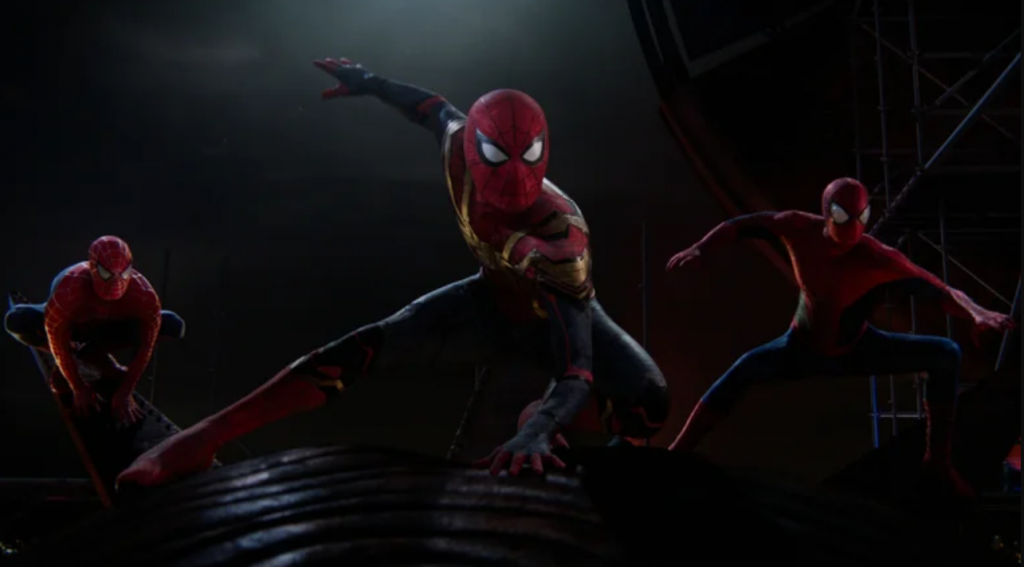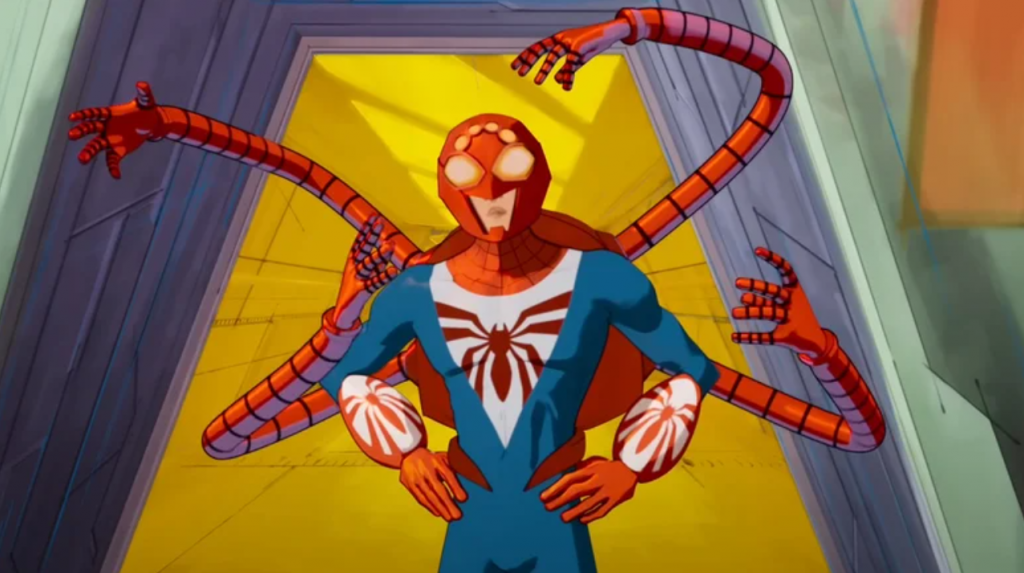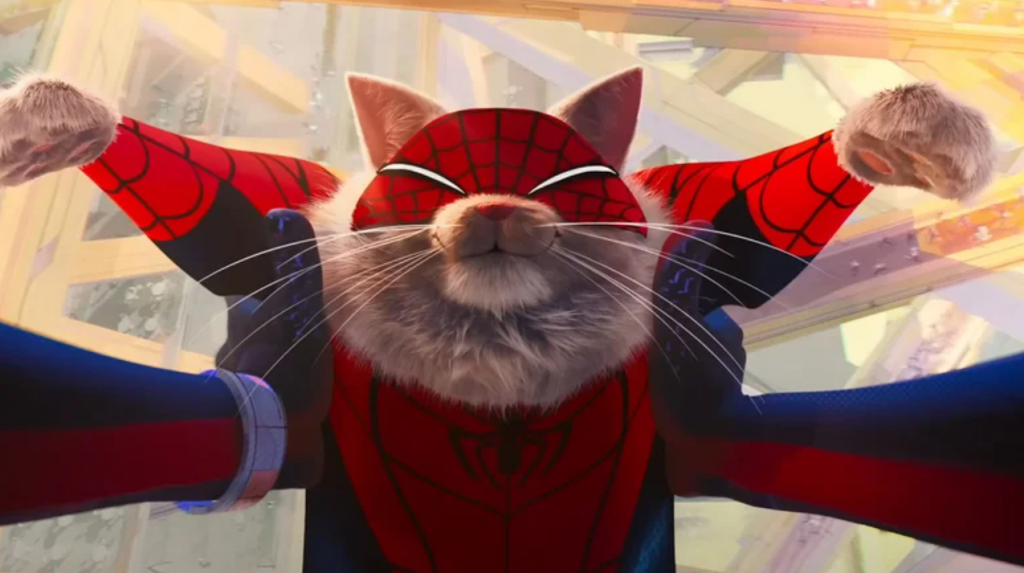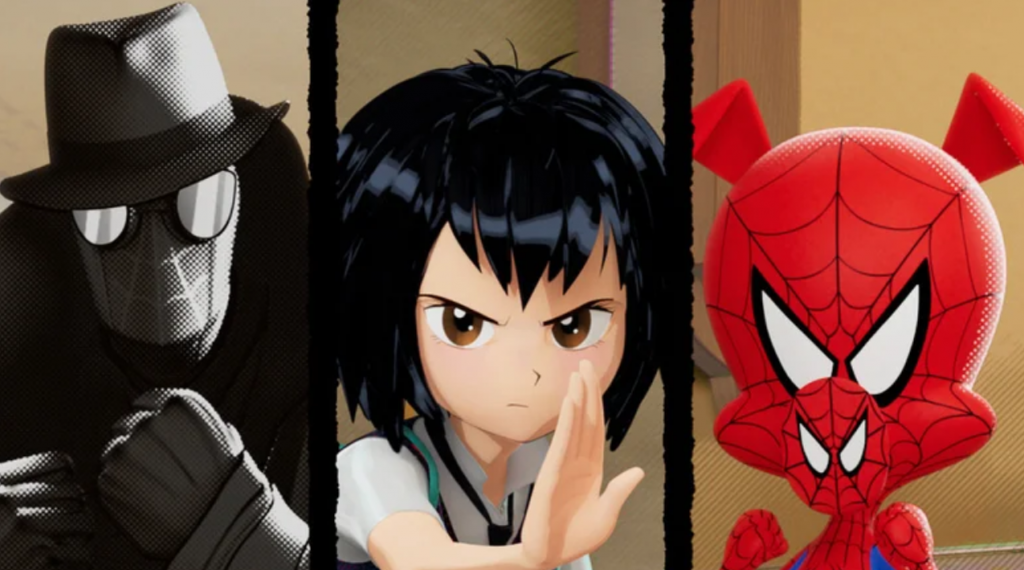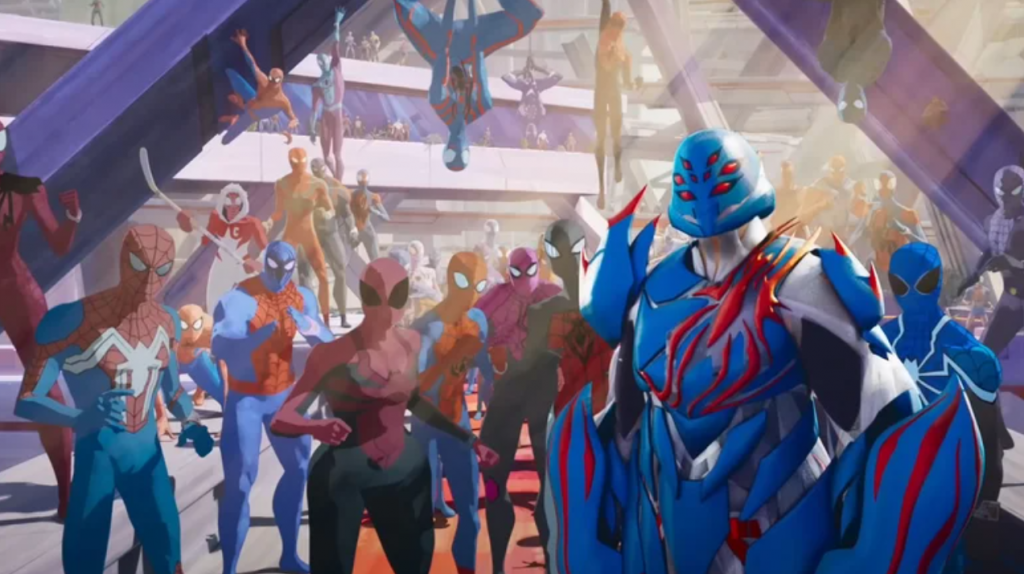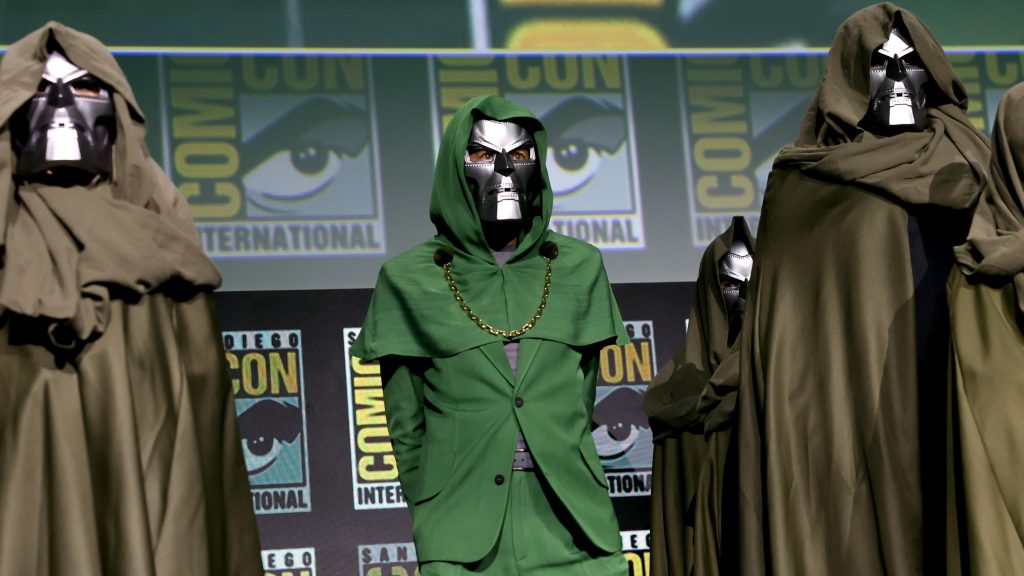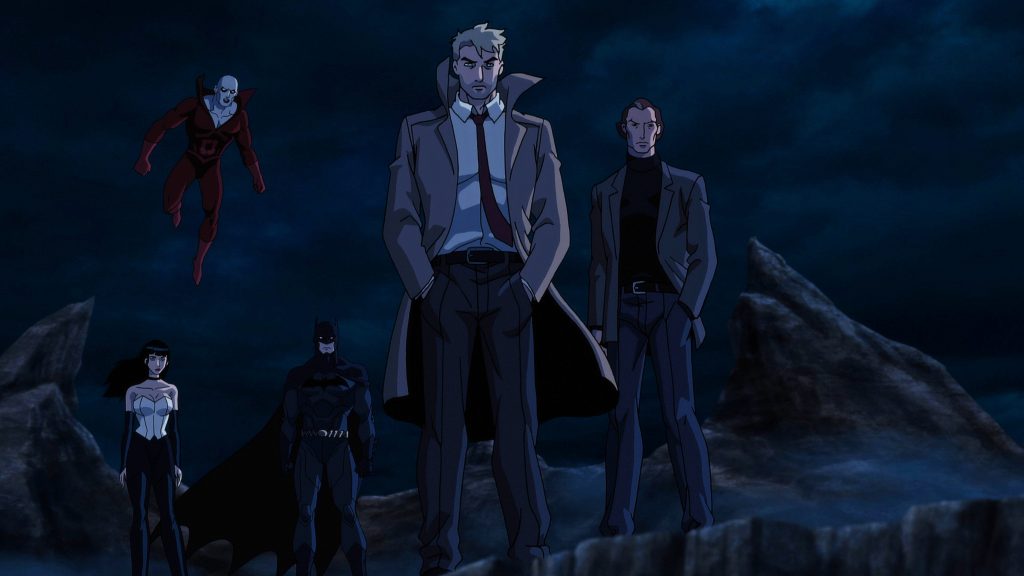Years before the release of the groundbreaking “Spider-Man: Into the Spider-Verse,” which was widely praised and transformed the animation industry, comic book legend Stan Lee shared his admiration for the iconic costume worn by the web-slinging hero he co-created. According to Lee, the beauty of Spider-Man is that readers worldwide can envision themselves behind the mask. This relatability has been a fundamental aspect of Peter Parker’s story since his debut in 1962 and has paved the way for diverse narratives within Marvel’s expansive multiverse. With the understanding that anyone can embody Spider-Man, countless variations of this beloved character exist, offering limitless possibilities for storytelling.
While “Into the Spider-Verse” was not the first endeavor in the long-running franchise to bring together different versions of Spider-Man, it undoubtedly stands out among its predecessors. Previous comic books, cartoons, and video games have explored this concept, but none have achieved the same global resonance as “Into the Spider-Verse.” With its remarkable box office success, overwhelmingly positive reception, and numerous accolades, it’s no surprise that Marvel and Sony are expanding the “Spider-Verse” narrative with not just one, but two upcoming movies: “Across the Spider-Verse” in 2023 and “Beyond the Spider-Verse” in 2024. These new installments promise to explore the multiverse of Spider-Man further and captivate audiences once again.
“Across the Spider-Verse” introduces a remarkable array of Spider-characters, comprising both familiar faces from previous Spider-related works and fresh creations exclusive to the movie. Let’s delve into the extensive roster of these web-slinging heroes.
Gwen Stacy, Spider-Woman
“Spider-Man: Across the Spider-Verse” commences by showcasing the life of Gwen Stacy, also known as Spider-Woman from Earth-65 (portrayed by Hailee Steinfeld). The movie offers a glimpse into Gwen’s existence following the events of “Spider-Man: Into the Spider-Verse.” In this iteration, Gwen’s origin story aligns closely with her comic book counterpart’s, as depicted in “Edge of Spider-Verse” #2 from 2014. Like her counterpart, Gwen acquires her superhuman abilities after being bitten by a radioactive spider. She then assumes a secret identity, using her newfound powers to combat crime as a vigilante. Tragically, her best friend, Peter Parker, undergoes a transformation into the Lizard and accidentally perishes during their ensuing confrontation. Gwen’s father, police officer George Stacy (portrayed by Shea Whigham), mistakenly believes that Spider-Woman is responsible for Peter’s demise.
Overwhelmed by fear and uncertainty surrounding her relationships and future, she eagerly seizes the opportunity to join the Spider Society. This expansive collective of spider-powered superheroes, originating from different Earths, has united under the leadership of Miguel O’Hara from Earth-928 (portrayed by Oscar Isaac). Their mission is to safeguard the integrity of the multiverse by preventing dimension-hopping anomalies from unraveling its fabric. Throughout her journey, she uncovers a startling revelation about her only other friend, Miles Morales (portrayed by Shameik Moore), who serves as the Spider-Man of Earth-1610. This revelation sheds light on why he is ineligible to join the Society. Despite the group’s explicit directives, she defies their orders and reunites with Miles during a crucial mission—an impulsive choice that sets off a chain of disastrous consequences.
After facing rejection from the Society, Gwen discovers that Miles is trapped on an unfriendly and unfamiliar Earth. Undeterred by the setback, the drummer who never truly fit in takes matters into her own hands. She assembles a unique “band” comprised of both familiar and newly encountered Spider-friends with the sole purpose of finding and rescuing Miles.
Miles Morales, Spider-Man
Miles Morales, the central character of the “Spider-Verse” trilogy, assumes the mantle of Earth-1610’s one and only Spider-Man and operates in the borough of Brooklyn. More than a year has elapsed since the events depicted in “Spider-Man: Into the Spider-Verse,” and during this time, Miles has fully embraced his role as the super-powered defender of his city. He even creates a new costume for himself, reflecting his personal design. Along his journey, Miles encounters the enigmatic Spot, initially perceived as a comical villain. However, as the story unfolds, the Spot rapidly evolves into a formidable and menacing threat.
After an unexpected visit from his friend Gwen Stacy, hailing from Earth-65, Miles Morales becomes aware of the Spider Society’s existence. Gwen, who was covertly sent to his Earth to track and apprehend the villain known as the Spot, inadvertently leads Miles into a multiversal portal during her pursuit. Unfortunately, Miles’s actions almost result in the destruction of another Spider-Man’s world. Upon reaching the Society’s headquarters, he faces rejection and discovers a startling truth: he was the “original anomaly.” The Spider that bestowed him with powers was intended for the destined Spider-Person of Earth-42, not him. To make matters worse, the Society opposes his efforts to save his father from a violent demise, citing the “canon event” that demands all Spiders endure the loss of someone close to them.
Refusing to surrender to the circumstances, Miles embarks on a daring and determined attempt to return to his own reality, skillfully evading the entire Spider Society along the way. However, his plan takes an unexpected turn as he finds himself transported to Earth-42 instead. To his dismay, he is apprehended by the Prowler of that world, who happens to bear the same name: Miles Morales.
Miguel O’Hara, Spider-Man 2099
“Spider-Man: Across the Spider-Verse” expands on the tantalizing post-credits scene of its predecessor, introducing Miguel O’Hara as the Spider-Man hailing from Earth-928. In this futuristic dimension set in the year 2099, the once familiar New York City has evolved into the technologically advanced Nueva York. Guided by his trusty holo-assistant Lyla, Miguel establishes the Spider Society, shouldering the responsibility of upholding order within the vast expanse of the Arachno-Humanoid Poly-Multiverse. Intriguingly, Miguel harbors a deep grudge against Miles Morales, holding him accountable for the initial disruption in the multiverse, as witnessed in “Into the Spider-Verse.”
The incarnation of Spider-Man 2099 in “Across the Spider-Verse” deviates significantly from the original portrayal that debuted in 1992’s “Spider-Man 2099” #1. In this iteration, Miguel is a deeply troubled and embittered individual, haunted by his past failures and devoid of any semblance of humor. His volatile temperament is evident as he unleashes his wrath by hurling objects in fits of rage, earning him the moniker “Property Damage Spider-Man” from the production team. While not an outright villain, he subjects Miles to relentless cruelty, revealing the grim fate of his father and forbidding him from intervening. Furthermore, Miguel goes so far as to denounce Miles as a mere mistake, insisting that he was never destined to become Spider-Man.
As the movie reaches its conclusion, Miguel and his formidable strike team embark on a relentless pursuit of Miles throughout the vast expanse of the multiverse. It becomes evident that this tenacious Spider-Man, often described as a “vampire ninja,” is determined to go to any lengths necessary to preserve the integrity of the Spider-Verse and ensure its continuity remains unchanged.
Jessica Drew, Spider-Woman
In “Spider-Man: Across the Spider-Verse,” the audience is introduced to the first new Spider-character, Jessica Drew (portrayed by Issa Rae). Hailing from an undisclosed Earth, Jessica is a formidable defender with an afro hairstyle, embodying the essence of an arachnid-themed hero. As a strong-willed and no-nonsense individual, she fearlessly engages in battles, even while expecting a child and riding her trusty motorcycle.
Spider-Gwen is immediately captivated by Jessica’s presence, as she extends an invitation to join the Spider Society and becomes her mentor. This dynamic mirrors the relationship between Miles and Earth-616’s Peter B. Parker (voiced by Jake Johnson) in the previous film, where guidance and support were shared.
Introduced in 1977’s “Marvel Spotlight” #32, Jessica Drew’s original version undergoes significant changes for her animated debut in “Spider-Man: Across the Spider-Verse.” While specific details about her origin story in this iteration remain undisclosed, it is evident that Miguel O’Hara, the leader of the Spider Society, places great trust in her. In fact, she assumes a prominent role as his second-in-command within the organization.
Jessica’s character is portrayed as highly critical of Peter B. Parker’s mentoring abilities, openly expressing her dissatisfaction. She readily points to Miles as evidence of Peter’s shortcomings as a teacher. This revamped portrayal adds depth to her interactions and highlights her strong personality and discerning nature.
At first, Jessica maintains a strict approach towards Gwen, considering her as her most promising student while expressing disapproval of her association with Miles. When Gwen is expelled from the Society by Miguel and sent back home, Jessica remains passive and does not intervene. However, as the film progresses, there is a noticeable change in Jessica’s attitude.
By the movie’s end, Jessica appears to be proud of Gwen’s independent decision to search for Miles without the Society’s support. This shift in Jessica’s demeanor raises the question of whether she may switch her allegiance in the trilogy’s concluding chapter, hinting at a possible change in her character trajectory.
Peter Parker, LEGO Spider-Man
In a captivating sequence showcasing the Spot’s newfound powers, he takes a spontaneous detour to Earth-13122, the realm of LEGO Spider-Man. This distinctive portrayal of the beloved webslinger remained undisclosed in the promotional materials leading up to the release of “Spider-Man: Across the Spider-Verse.” However, the revelation of LEGO Peter Parker’s inclusion came to light during an interview with the main cast on Fandango. Surprisingly, LEGO Spider-Man plays a significant role in the film, going beyond a fleeting and easily missed cameo appearance.
Following the emergence of the enigmatic black-and-white antagonist within the LEGO universe, causing destruction to a section of the Daily Bugle building, LEGO Peter Parker becomes an unexpected witness to the event. Seeking respite from the relentless scrutiny of J. Jonah Jameson, the unassuming minifigure takes refuge in a separate room and undergoes a transformation into LEGO Spider-Man. Utilizing his Spider Society device, accompanied by delightful “beep boop” sound effects reminiscent of playing with LEGO bricks, he promptly reports the incident to Miguel O’Hara. In response, Miguel expresses gratitude and acknowledges LEGO Spider-Man as one of their most exemplary Spider-Men.
The inclusion of LEGO Spider-Man in this film brings a delightful sense of nostalgia and completes a fascinating “full-circle” journey. It is worth noting that the first official LEGO sets featuring the beloved superhero were tie-ins for Sam Raimi’s “Spider-Man” film, which debuted in 2002. However, in “Across the Spider-Verse,” the LEGO Spider-Man character is based on the version that accompanied the comic-inspired “Daily Bugle” set released in 2021.
Pavitr Prabhakar, Spider-Man India
When Gwen Stacy is given the task of locating and apprehending the Spot in the alternate reality of Earth-50101’s Mumbattan, an undercover Miles Morales discreetly trails her. Consequently, Miles has an unexpected encounter with Gwen’s contact and fellow member of the Spider Society in that dimension: Pavitr Prabhakar, also known as that Earth’s Spider-Man, portrayed by Karan Soni. Pavitr is introduced as a cheerful and light-hearted individual who fully embraces his role as Spider-Man. With his web bangles, he gracefully swings through the city, showcasing his natural talent for superheroics despite having been a superhero for just six months. He also keenly senses the romantic tension between Miles and Gwen (playfully mentioning it multiple times) and cleverly mocks Western stereotypes of Indian culture during their joint battle against the Spot.
Unfortunately, this encounter sets in motion a chain of events that highlight the repercussions of meddling with the multiverse. As Miles, who was not meant to be present in that reality, intervenes to save Earth-50101’s Inspector Singh from impending danger, he disrupts a crucial “canon event.” The consequences of this disruption become apparent as Pavitr’s reality begins to crumble. Subsequently, we catch a glimpse of the Spider Society’s team responsible for repairing the multiverse, deploying enigmatic devices aimed at preventing further dimensional intrusions. However, we are left uncertain as to whether their efforts will prove successful.
The character made his debut in the comic book series “Spider-Man: India” #1 in 2005. In the comics, Pavitr Prabhakar dons a costume that closely resembles the classic Spider-Man suit, with the addition of white pants and red pointed shoes. Notably, the comics version of Pavitr operates in Mumbai, a real-life Indian city, rather than a fictional location.
Hobie Brown, Spider-Punk
“Spider-Man: Across the Spider-Verse” takes great care in visually representing each Spider-character’s unique dimension. One standout example is Earth-138’s Spider-Man, Hobie Brown, also known as Spider-Punk (portrayed by Daniel Kaluuya). Spider-Punk embodies the spirit of rebellion, incorporating the visual elements of his dimension through a collage of newspapers and band posters adorning his costume. In the midst of battle, he effortlessly strums his guitar, infusing every encounter with electrifying energy while fearlessly challenging authority and giving The Man a defiant gesture.
Hobie, aka Spider-Punk, becomes a valuable ally to Spider-Gwen, Miles Morales, and Pavitr Prabhakar during a pivotal moment on Earth-50101. Together, they attempt to prevent the Spot from activating Alchemax’s super collider, although their efforts ultimately end in failure. Later, Hobie joins Miles and Gwen as they visit the Spider Society headquarters on Earth-928. It quickly becomes evident that he and Miguel O’Hara share a mutual dislike for each other. In a humorous sequence, Hobie takes pleasure in a diaper-related incident involving Peter B. Parker’s daughter Mayday, playfully referring to it as “taking a crap on the establishment.” At the same time, Miguel is left in an amusing predicament. Significantly, Hobie plays a crucial role in aiding Miles’ escape from captivity, capitalizing on the chaos unfolding at the Spider Society HQ to make his exit.
As the story progresses, Hobie’s friendship with Gwen becomes increasingly valuable, much to the envy of Miles. Their bond proves crucial when both Gwen and Miles decide to go against the rules: Hobie provides Gwen with the “Project Bootleg” dimension-hopping device, allowing her to gather her loyal Spider-allies and form their own renegade team.
Peter Parkedcar, the Spider-Mobile
The Spider-Mobile, also known as the Spider-Buggy, holds a peculiar yet iconic place in Spider-Man’s comic book lore. Despite being a superhero who relies on his agility and web-slinging abilities for transportation (and lacking a driver’s license in his civilian life), Spider-Man and his close friend, the Human Torch, he collaborated to create this unusual vehicle. The Spider-Mobile made its full debut in 1974’s “Amazing Spider-Man” #130 but became inoperable after approximately 30 issues. Nevertheless, it has made multiple comebacks in the comics, serving as both a functional mode of transportation and a display piece in museums, much to the wall-crawler’s chagrin. In recent years, a notable resurgence occurred in 2015’s “Amazing Spider-Man” Vol. 3 #12. Still, with a unique twist: it featured a sentient Spider-Man variant from Earth-53931 rather than being a vehicle for Spider-Man himself.
The Spider-Mobile, accompanied by the comically serious alter ego “Peter Parkedcar,” makes a memorable appearance in “Spider-Man: Across the Spider-Verse.” Its inclusion and Parkedcar’s existence add a touch of absurdity to the narrative, earning them a brief moment in the spotlight. As Miles explores the Spider Society HQ alongside Spider-Gwen, Spider-Punk, and Jessica Drew, he officially encounters the Spider-Mobile, complete with its designated Earth number in a caption box. Parkedcar joins the rest of the Society in their pursuit of Miles but hilariously fails to navigate the web-tightrope held by another Spider-variant.
Ben Reilly, the Scarlet Spider
Upon seeing the Scarlet Spider (Andy Samberg) in “Spider-Man: Across the Spider-Verse,” comic book enthusiasts would immediately recognize the embodiment of the grim and gritty 1990s comics in this version of Ben Reilly. From head to toe, he showcases heavily inked artwork that captures the era’s essence. Undoubtedly, his visually striking comic-inspired appearance stands out as his most impressive attribute. However, those anticipating a faithful portrayal of the beloved Spider-clone may be disappointed with this iteration.
Originating from Earth-94, a clever nod to the Scarlet Spider’s debut in 1994’s “Web of Spider-Man” #118, the Ben Reilly portrayed in “Spider-Man: Across the Spider-Verse” serves as a tongue-in-cheek caricature of ’90s comic book clichés. With his excessively elaborate descriptions of ordinary objects, an obsession with muscles and striking the “perfect pose,” and a tendency for melodramatic introspection, it becomes quite a task to take this character seriously. What adds to the challenge is his own exaggerated self-importance, making it difficult to embrace his portrayal fully.
In the film’s climactic third act, the Scarlet Spider joins forces with Miguel O’Hara and Jessica Drew as they embark on a search for Miles Morales in Earth-1610. However, his idiosyncrasies and lack of self-awareness prove to be his downfall. Spider-Gwen cleverly outwits him, luring him into her makeshift portal and separating him from his dimension-crossing device. As the story unfolds, it remains uncertain whether he will make an appearance in the next film and if his character will evolve beyond being a mere comedic stereotype.
Margo Kess, Spider-Byte
Upon entering the Spider Society HQ, Miles Morales is greeted by a captivating ensemble of Spider-characters, each possessing unique abilities. However, Miles’s enthusiasm doesn’t waver as he confidently introduces himself as “Spider-Man” to the digital Spider-hero known as Spider-Byte (Amandla Stenberg). In response, Spider-Byte humorously deadpans, “Oh wow, what a surprise… we’re all Spider-Man here.”
In “Spider-Man: Across the Spider-Verse,” Margo’s digital representation serves as the guardian for the Spider Society, fulfilling the role of a gatekeeper from the control room. Taking on the persona of Spider-Byte, Margo’s primary duty involves returning the interdimensional supervillains captured by the Society back to their respective realms. As the defender of Earth-22191, this rendition of Margo Kess could easily be viewed as a virtual manifestation inspired by her comic book counterpart, who made her debut in 2018’s “Vault of Spiders” #1.
After skillfully evading the vigilant eyes of the entire Spider Society, Miles puts his invisibility power to use, slipping past Margo’s attention and discreetly entering the teleporter. His goal is to return to Earth-1610. However, due to the teleporter’s mechanism of selecting the destination based on the origin of the passenger’s powers, Miles is mistakenly sent to Earth-42. The Spider that granted him his abilities originates from this very dimension. This turn of events proves significant. While Margo has an opportunity to reboot the system and prevent Miles from escaping, she chooses not to take any action. Instead, she allows him to be beamed out of their headquarters. Consequently, it comes as no surprise when she later appears as a member of Spider-Gwen’s newly formed renegade group during the film’s concluding moments.
Peter B. Parker, Spider-Man (and Mayday Parker)
Naturally, no “Spider-Verse” film would be complete without the beloved and laid-back mentor figure, Peter B. Parker. This time, it appears that the weary Spider-Man from Earth-616 (affectionately referred to as “Humbling Reality Spider-Man” by Spider-Punk) has managed to pull himself together and find his footing. Gone is his previous disheveled appearance and displaced demeanor from “Spider-Man: Into the Spider-Verse.” Instead, he now sports a more polished ensemble, complete with a jacket designed for carrying a baby. In essence, the dadbod Spider-Man has transitioned into an actual father figure.
After returning to his own dimension, Peter finds solace in reuniting with Mary Jane Watson (portrayed by Zoë Kravitz). Their renewed love blossoms and eventually leads to the arrival of their daughter, Mayday, who inherits her father’s incredible spider powers. Peter embraces his role as a dedicated parent and crafts a web-shooting bracelet for Mayday, a delightful accessory that complements her adorable crocheted Spider-bonnet.
Interestingly, Peter’s transformative journey alongside Miles Morales in the previous film played a significant role in helping him overcome his anxieties about parenthood. In a heartfelt exchange with his protégé, Peter openly acknowledges that his experiences with Miles played a part in his personal growth and acceptance of fatherhood. This realization adds depth to their brief yet intense conversation following Miles’ escape from the Spider Society HQ.
Once Miles manages to make his daring escape, Peter returns to his familiar home dimension, gently placing Mayday in her crib. In a somewhat halfhearted manner, he attempts to brush off the fact that he brought their baby into yet another perilous situation. However, the tranquility of the Parker household is abruptly interrupted when Spider-Gwen unexpectedly appears in Peter’s backyard, utilizing her unauthorized dimension-hopping device. True to form, Peter swiftly decides to join Gwen in her mission to locate and reunite with Miles, embarking on another thrilling adventure across the Spider-Verse.
Animated Spider-Men
Upon the release of the first trailer for “Spider-Man: Across the Spider-Verse,” keen-eyed Spider-Man enthusiasts immediately noticed a familiar yet somewhat overlooked rendition of the wall-crawler amidst the ranks of the Spider Society. It was none other than Earth-751263’s Peter Parker, famously known as Spider-Man Unlimited from the beloved 1999 animated series. (Regrettably, the absence of the ’90s animated Spider-Man from Earth-92131 did not go unnoticed.) Nevertheless, this subtle inclusion sparked immense excitement among fans, promising that other beloved animated iterations of Spider-Man would also appear in the upcoming “Across the Spider-Verse” film.
Indeed, further promotional materials for “Spider-Man: Across the Spider-Verse” unveiled another exciting addition to the lineup: the Spider-Man from the beloved “Spectacular Spider-Man” animated series, which originally aired in 2008 (designated as Earth-26496). While Spider-Man Unlimited had a limited role in the film, the Spectacular version gets two noteworthy moments to showcase his presence. One instance occurs during Miguel O’Hara’s explanation of the Arachno-Humanoid Poly-Multiverse, where Spectacular’s interpretation of the ASM-90 canon event is depicted. Additionally, voice actor Josh Keaton, who voiced Spider-Man in the series, briefly reprises his role with a clever one-liner aimed at dissuading Miles from altering the canon event of Earth-1610 — specifically, the death of his father, the recently promoted Captain Jeff Davis.
One expected yet thoroughly enjoyable addition to the Spider Society is none other than the Spider-Man from Earth-67, the iconic character from the famous pointing meme. Voiced by Jorma Taccone in the memorable post-credits scene of “Spider-Man: Into the Spider-Verse,” the ’67 Spider-Man enthusiastically joins the Society in their quest to locate Miles. With a brave declaration of his arrival, he proceeds to showcase his trademark inefficiency by swinging at a leisurely pace that falls far short of capturing the elusive renegade Spider.
The MCU trio
Undoubtedly, one of the most pressing inquiries surrounding “Spider-Man: Across the Spider-Verse” was the potential involvement of Tobey Maguire, Andrew Garfield, and Tom Holland. Having witnessed the triumphant union of these three actors in the live-action realm with “Spider-Man: No Way Home” in 2021, it seemed only natural to anticipate their presence in another web-slinging adventure spanning multiple dimensions. Well, the answer to that question is indeed affirmative… with a twist.
Both Maguire, embodying the Friendly Neighborhood Spider-Man of Earth-96283, and Garfield, portraying the Amazing Spider-Man of Earth-120703, make notable appearances in “Across the Spider-Verse” through the clever utilization of archival footage. In a poignant moment, when Miguel O’Hara imparts the universal experience of loss shared by every Spider-Man, the scene strategically highlights the brief but impactful snippets of Capt. George Stacy’s (Dennis O’Leary) demise from 2012’s “The Amazing Spider-Man.” Subsequently, the focus shifts to the significant event in the Spider-Man mythology—the death of Uncle Ben—with glimpses of Maguire and Cliff Robertson’s portrayal of Ben Parker, capturing the emotional resonance of his passing in 2002’s “Spider-Man.”
On the other hand, Holland’s Spider-Man remains absent from the narrative of “Across the Spider-Verse,” although he receives a mention within the film’s initial moments. Miguel makes a reference to an event involving “Doctor Strange and the little nerd back on Earth-199999,” referring to the official Earth designation of the Marvel Cinematic Universe.
Spider-Man 2211
In “Spider-Man: Across the Spider-Verse,” among the diverse members of the Spider Society, several individuals possess distinctive appearances that set them apart as unique Spider-Man variants. One such standout is Max Borne, also known as the Spider-Man of 2211 from Earth-9500. Embracing a futuristic theme, Max Borne’s Spider-Man design takes the arachnid motif to unprecedented heights. Notably, he dons a multi-eyed helmet and features four red appendages resembling Doc Ock’s mechanical arms, albeit with human hands, emerging from what appears to be a metallic backpack.
In the early stages of the exhilarating chase sequence featuring Miles Morales in “Across the Spider-Verse,” Spider-Man 2211, also known as Max Borne, briefly steals the spotlight. In a comical twist, Miles desperately clings to Borne’s distinctive red exoskeleton in a futile attempt to conceal himself from the other members of the Spider Society. This unexpected encounter causes a momentary confusion among the Society, mistaking Borne for Miles and highlighting the group’s sheer size, where even the members are unfamiliar with each other’s identities.
Spider-Man 2211’s introduction in “Across the Spider-Verse” holds an intriguing connection to his debut in the pages of a comic book. The one-shot issue titled “Spider-Man 2099 Meets Spider-Man” #1, released in 1995, features a meeting between two different versions of the web-slinger. Notably, Spider-Man 2211 serves a similar purpose in both the film and the comic: safeguarding the timeline’s integrity. Just as he does in the movie, Spider-Man 2211 arrives just in time to rescue Peter Parker and Miguel O’Hara from the peril of being erased from existence, courtesy of the “retcon bombs” unleashed by the Hobgoblin of 2211.
Spider-Zoo
To promote “Spider-Man: Across the Spider-Verse,” the official @SpiderVerse Twitter account treated fans to an exciting preview showcasing the “Spider-Zoo.” In this peculiar ensemble, a collection of Spider-enhanced animals has managed to earn membership into the esteemed Spider Society, creating a unique and unexpected menagerie.
Among the initial members we encounter, there is Widow (affectionately known as “Spider-Horse”), the reliable masked steed of Web-Slinger (Patrick O’Hara, the cowboy Spider-Man from Earth-31913). Additionally, we have Spider-Cat, a character originating from the pages of “Spider-Island: I Love New York City” #1 in 2011, who playfully surprises Miles Morales by launching a web-hairball at his face. Spider-Monkey, hailing from the Marvel Apes dimension (Earth-8101), also makes a few appearances during the exhilarating chase sequence. However, the spider-powered primate’s agility fails to aid the Society in apprehending Miles. Lastly, we witness the presence of Spider-Wolf, whom Miles easily handles by employing a well-placed hat to the face. It’s worth noting that while multiple iterations of this character exist in the comics, the portrayal in “Across the Spider-Verse” possesses a notably more lupine appearance.
The Spider-creature that truly steals the spotlight is none other than Spider-Rex, a Tyrannosaurus rex donning a Spider-Man costume, complete with web-shooters adorning its tiny wrists. This captivating character made its debut in the 2022 comic “Edge of Spider-Verse” #1. The origin story of Pter Ptarker, the alter ego of Spider-Rex, is quite extraordinary. Pteranodon was bitten by a T. rex and simultaneously struck by a meteorite containing alien spider stowaways. This unique encounter leads to a “Freaky Friday” scenario, with Ptarker now occupying the body of the T. rex, inexplicably dressed in a spider-themed suit. As Spider-Ham famously remarked in “Into the Spider-Verse,” “It CAN get weirder!”
The ITSV Spiders
During a January 2023 interview with Screen Rant, Nicolas Cage disclosed that Sony had not approached him to reprise his role as Spider-Man Noir (Peter Parker of Earth-90214) from “Spider-Man: Into the Spider-Verse.” This news, coupled with the absence of confirmation from Kimiko Glenn (the voice of Peni Parker from Earth-14512) and John Mulaney (who portrayed Earth-8311’s Spider-Ham), dampened the hopes of fans eager to see the secondary Spider-trio return in “Spider-Man: Across the Spider-Verse.” However, it appears that the multiversal friends of Miles Morales, Gwen Stacy, and Peter B. Parker will make unexpected appearances, and their roles are set to expand further in the upcoming film, “Spider-Man: Beyond the Spider-Verse.”
In “Across the Spider-Verse,” the first of the trio to make an appearance is Peni Parker, who pilots an upgraded and sleeker version of her robotic SP//dr costume, replacing the one that was destroyed in the previous film’s climactic battle. This new mechanical suit closely resembles its comic book counterpart, as seen in “Edge of Spider-Verse” #5 from 2014. Spider-Ham and Spider-Man Noir are Joining Peni, who appear alongside Peter B. Parker, Spider-Punk, Pavitr Prahabkar, and Spider-Byte towards the movie’s end. They form part of Spider-Gwen’s splinter Spider-squad, aiding her in outmaneuvering Miguel O’Hara’s Spider Society and locating Miles before anyone else. Their unexpected appearance is a delightful surprise, but it makes perfect sense given their friendship with Miles in “Into the Spider-Verse.”
The Spider Society
Miguel O’Hara’s Spider Society expands across the vast expanse of the Arachno-Humanoid Poly-Multiverse, more commonly referred to as the “Spider-Verse” by Miles Morales. It encompasses a diverse array of characters, including established ones like Sun-Spider, a fan creation that emerged from Marvel’s Spidersona contest in 2019. Additionally, “Spider-Man: Across the Spider-Verse” introduces a host of original heroes who are part of the Spider Society’s ranks.
A considerable portion of the Spider Society’s members draw inspiration from established Spider-Man characters but feature slight variations from their counterparts in other media. For instance, one character bears a resemblance to Arachnido Jr., while others don different versions of Earth-616 Spider-Man’s iconic Spider-Armors. One member takes cues from Spider-Man’s fierce clone, Spidercide, while others draw inspiration from characters like Ai Apaec and Julia Carpenter’s Spider-Woman. Dedicated fans have even reported spotting Takuya Yamashiro, the live-action Spider-Man from Toei’s production, among the diverse group. Spinneret and Spiderling (Mary Jane Watson-Parker and Annie Parker from Earth-18119), Mangaverse Spider-Man from Earth-2301, and a rendition of the Bombastic Bagman (essentially Peter wearing a paper bag over his head) are also present. Interestingly, the Spider-Man from the Insomniac game universe (Earth-1048) makes not just one but two appearances: one donning the PS4 Advanced Suit and the other sporting the suit from “Marvel’s Spider-Man 2” for the PS5. However, it should be noted that many of these characters have minimal involvement in the film’s plot.
In addition to the familiar Spider-variants, “Across the Spider-Verse” introduces new and unique characters to the mix. These original creations include Malala Windsor, also known as Spider-UK from Earth-835, as well as Cyborg Spider-Woman, who even received her own collector action figure in the Marvel Legends toyline. Another intriguing addition is the Spidersona of Metro Boomin, a musician involved in crafting the soundtrack for “Across the Spider-Verse.”


